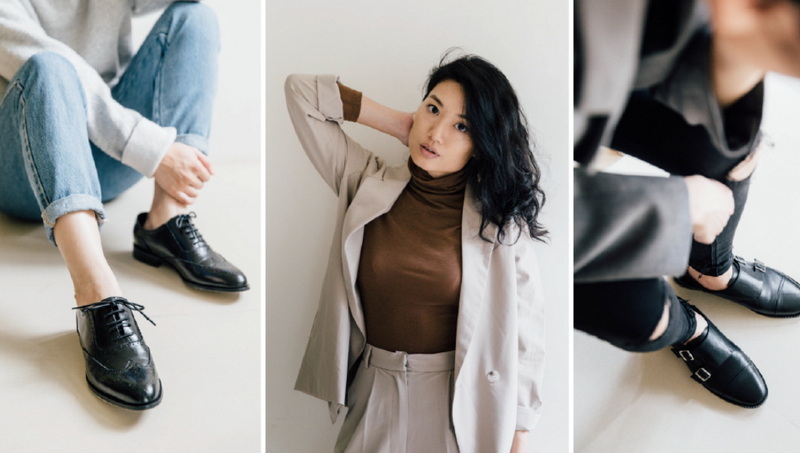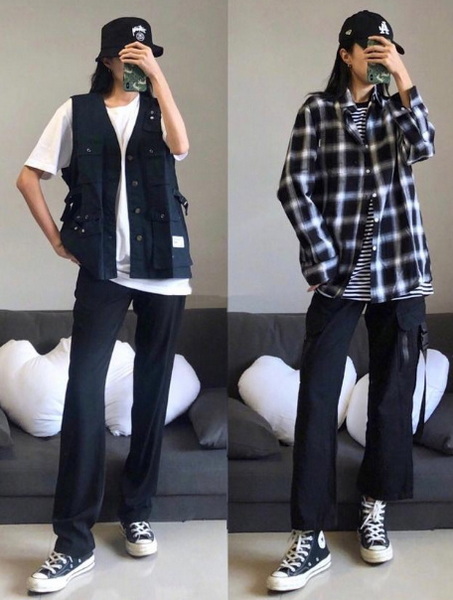Content Menu
● Introduction to Men's and Women's Shoe Sizes
>> Key Differences in Foot Shape
● How to Convert Women's to Men's Shoe Sizes
>> Conversion Chart Example
>> Understanding Sizing Variations
● Styling Men's Shoes for Women
>> Oxford Shoes
>> Loafers
>> Sneakers
>> Combat Boots
● Factors to Consider When Buying Men's Shoes as a Woman
>> Tips for Narrow Feet
>> Tips for Wide Feet
● Common Challenges and Solutions
>> Too Wide
>> Too Long
● Styling Tips for Different Occasions
>> Formal Events
>> Casual Outings
>> Work Environment
● Conclusion
● FAQ
>> 1. What is the typical size difference between men's and women's shoes?
>> 2. How do I convert my women's shoe size to men's?
>> 3. What are the benefits of wearing men's shoes for women?
>> 4. How can I ensure a comfortable fit in men's shoes?
>> 5. Are there any specific styles of men's shoes that are popular among women?
● Citations:
The question of whether men's shoes can fit women is a common one, especially with the increasing trend of women wearing men's shoes for both style and comfort. This article will explore the differences between men's and women's shoe sizes, the factors to consider when choosing men's shoes as a woman, and provide guidance on how to ensure a comfortable fit.

Introduction to Men's and Women's Shoe Sizes
Men's and women's shoes follow different sizing systems, primarily due to differences in foot shape and size. Generally, men's shoes are wider and larger than women's shoes, accommodating the broader and longer foot structure typical of men. Women's shoes, on the other hand, are narrower and smaller, designed to fit the average woman's foot shape, which is typically narrower and shorter than a man's.
Key Differences in Foot Shape
- Width: Men's shoes are generally wider, especially in the toe box and forefoot area, making them a comfortable option for women with broader feet.
- Length: Men's shoes are typically longer than women's shoes for the same size number, meaning a woman might need to go down 1.5 to 2 sizes when choosing men's shoes.
How to Convert Women's to Men's Shoe Sizes
Converting shoe sizes between genders is relatively straightforward. If you wear a women's size 8, you would typically need a men's size 6.5. However, it's crucial to check specific brand sizing charts as measurements can vary.
Conversion Chart Example
| Women's Size | Men's Size |
| 6 | 4.5 |
| 7 | 5.5 |
| 8 | 6.5 |
| 9 | 7.5 |
Understanding Sizing Variations
Different brands may have slightly different sizing standards, so it's important to try on shoes or refer to the brand's size chart before making a purchase. Some brands offer more generous sizing, while others may run smaller.
Styling Men's Shoes for Women
Men's shoes can be a great addition to a woman's wardrobe, offering a unique blend of style and comfort. Here are some popular styles and how to style them:
Oxford Shoes
Oxford shoes are a classic choice that can add a professional touch to any outfit. Look for a pair with a low heel and sleek silhouette for a modern look. They pair well with dresses, skirts, or trousers for a chic, professional appearance.
Loafers
Loafers are versatile and can be dressed up or down. They're perfect for both office wear and casual outings. Slip-on loafers are great with jeans and a casual top, while penny loafers can add sophistication to a suit.
Sneakers
Sneakers are a great option for casual wear. They come in a variety of styles and colors, making them easy to pair with different outfits. From athletic wear to streetwear, sneakers can add a sporty touch to any look.
Combat Boots
For a bolder look, combat boots can add an edgy touch to any outfit. They're available in various colors and styles, from rugged lace-up designs to sleeker, more minimalist versions. Pair them with dresses for a chic contrast or with jeans for a casual, edgy look.
Factors to Consider When Buying Men's Shoes as a Woman
When purchasing men's shoes, consider the following factors to ensure a comfortable fit:
- Width: Men's shoes are generally wider, which can be beneficial for women with broader feet but may require adjustments for those with narrower feet.
- Length: Go down 1.5 to 2 sizes from your usual women's size to find the right fit.
- Material and Support: Ensure the shoes provide adequate support and are made from comfortable materials.
Tips for Narrow Feet
- Use insoles to fill extra space and enhance support.
- Opt for styles with adjustable laces or straps for a snug fit.
- Consider brands offering slim-fit options in men's footwear.
Tips for Wide Feet
- Take advantage of the wider toe box in men's shoes for added comfort.
- Look for styles with soft, breathable materials to reduce pressure on the feet.

Common Challenges and Solutions
Some women may encounter challenges when wearing men's shoes, such as finding the right width or dealing with a longer length. Here are some common issues and how to address them:
Too Wide
- Use insoles or shoe inserts to fill the extra space and provide better support.
- Choose styles with elastic or adjustable parts to secure the foot.
Too Long
- Wear thicker socks to fill the extra length.
- Consider using heel grips or insoles to prevent slipping.
Styling Tips for Different Occasions
Men's shoes can be styled for various occasions, from formal events to casual outings. Here are some tips:
Formal Events
- Pair oxfords or loafers with a suit or dress for a professional look.
- Consider black or dark-colored shoes for a more formal appearance.
Casual Outings
- Sneakers are perfect for casual wear, especially with jeans or athletic wear.
- Combat boots can add an edgy touch to dresses or skirts for a chic, casual look.
Work Environment
- Loafers or oxfords are great for office wear, adding a touch of sophistication to any outfit.
- Ensure the shoes are polished and well-maintained for a professional appearance.
Conclusion
Men's shoes can indeed fit women, provided they understand the sizing differences and choose styles that accommodate their foot shape. With the right fit and styling, men's shoes can be a stylish and comfortable addition to any woman's wardrobe.

FAQ
Here are some frequently asked questions about men's shoes fitting women:
1. What is the typical size difference between men's and women's shoes?
Men's shoes are generally 1.5 to 2 sizes larger than women's shoes for the same foot length. For example, a woman's size 8 is equivalent to a man's size 6.5.
2. How do I convert my women's shoe size to men's?
To convert your women's shoe size to men's, subtract 1.5 sizes. For instance, if you wear a women's size 9, you would typically need a men's size 7.5.
3. What are the benefits of wearing men's shoes for women?
Men's shoes can offer a roomier toe box and broader forefoot, which can be more comfortable for women with wider feet. They also provide a unique style option that can add variety to a woman's wardrobe.
4. How can I ensure a comfortable fit in men's shoes?
Ensure a comfortable fit by trying on shoes, using insoles if necessary, and opting for styles with adjustable laces or straps. It's also important to check the brand's sizing chart.
5. Are there any specific styles of men's shoes that are popular among women?
Yes, styles like oxfords, loafers, sneakers, and combat boots are popular among women for their versatility and style.
Citations:
[1] https://www.footankleinstitute.com/blog/mens-and-womens-shoe-sizes-difference/
[2] https://blacktulipstudio.com/blogs/the-slow-roast/difference-between-mens-and-womens-shoes
[3] https://coveti.com/the-ultimate-guide-on-how-to-wear-men-shoes-for-women/
[4] https://www.freepik.com/free-photos-vectors/men-women-shoes
[5] https://www.youtube.com/watch?v=STOgiT9yktc
[6] https://shopqbyqs.com/blogs/news/do-mens-shoes-fit-the-same-as-womens-a-comprehensive-guide
[7] https://kattylooks.com/can-women-wear-mens-shoes-complete-guide/
[8] https://www.chums.co.uk/blog/is-there-a-difference-between-mens-and-womens-shoes
[9] https://mallet.com/blogs/news/are-mens-shoe-sizes-the-same-as-womens
[10] https://www.keenfootwear.ca/blogs/keen-blog/faq-how-to-convert-shoe-sizes
[11] https://www.pinterest.com/suzannelevinedr/masculine-shoes-for-women/
[12] https://runrepeat.com/guides/differences-mens-womens-running-shoes
[13] https://www.istockphoto.com/photos/mens-and-womens-shoes
[14] https://www.youtube.com/watch?v=DIeA7FErxB4
[15] https://www.istockphoto.com/photos/women-and-mens-shoes
[16] https://www.youtube.com/watch?v=PAHAPL14ig0
[17] https://www.reddit.com/r/RunningShoeGeeks/comments/y6m2w0/experiences_buying_womens_shoes_as_a_man/
[18] https://www.keenfootwear.com/blogs/keen-blog/faq-how-to-convert-shoe-sizes
[19] https://www.roadrunnersports.com/blog/women-to-men-shoe-size
[20] https://www.reddit.com/r/RunningShoeGeeks/comments/10b8tfc/is_width_the_only_difference_between_then_mens/
[21] https://www.youtube.com/watch?v=csGBaknTnXI
[22] https://www.bally.com/en/category/men-shoes/
[23] https://www.youtube.com/watch?v=DMkUIpuZGGQ
[24] https://www.hermes.com/us/en/category/men/shoes/
[25] https://www.youtube.com/watch?v=2wNmAiHK11w

















